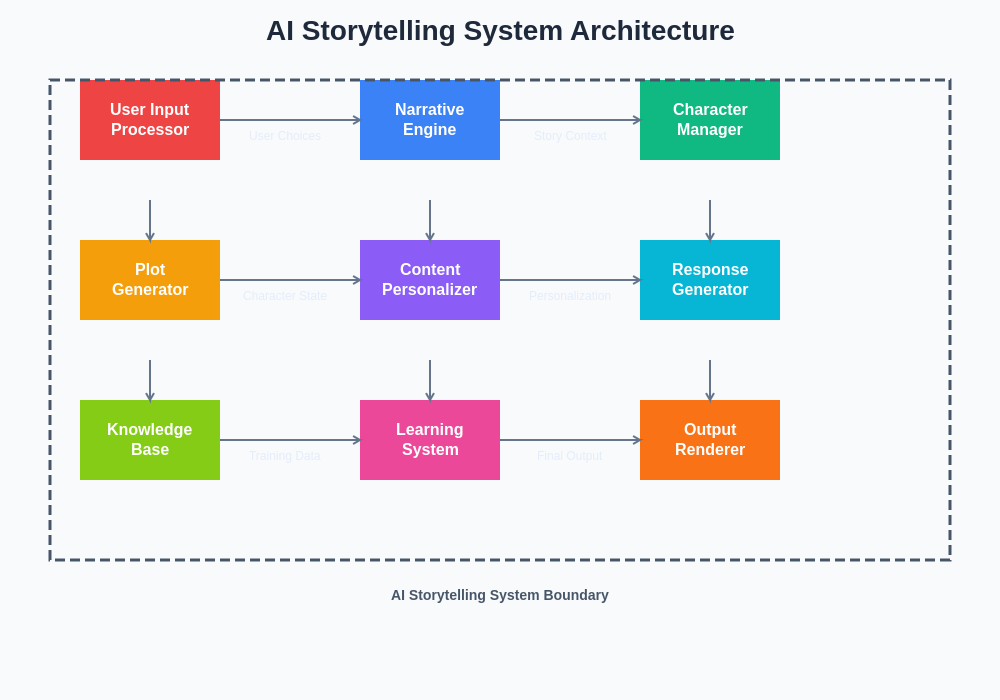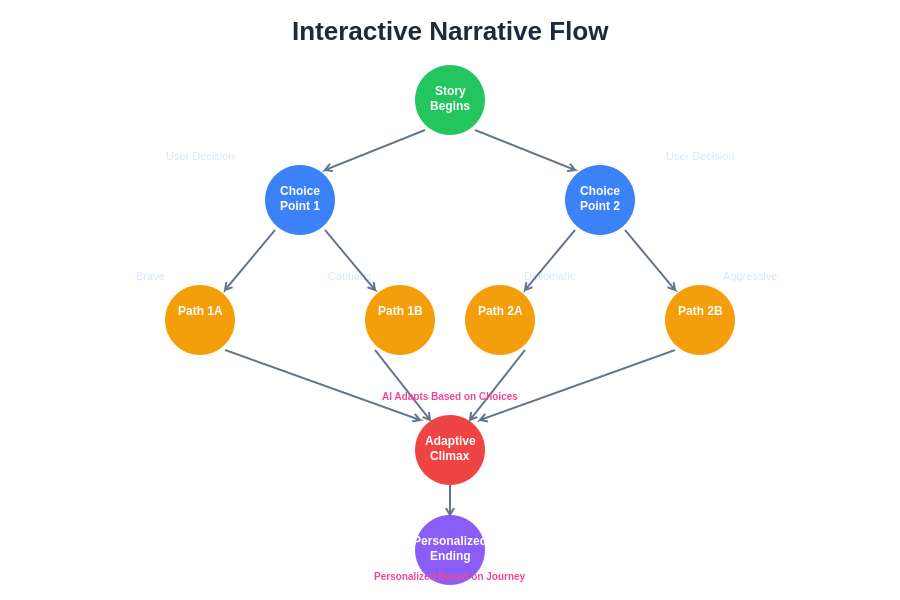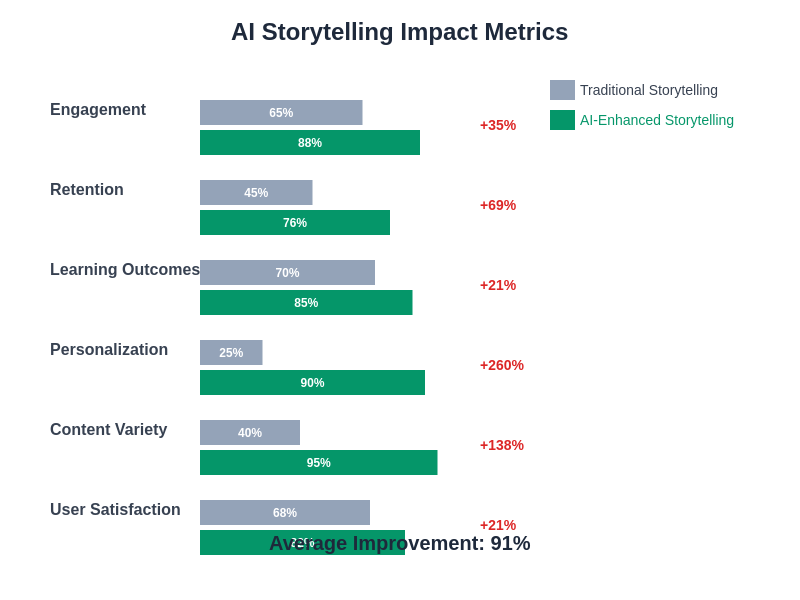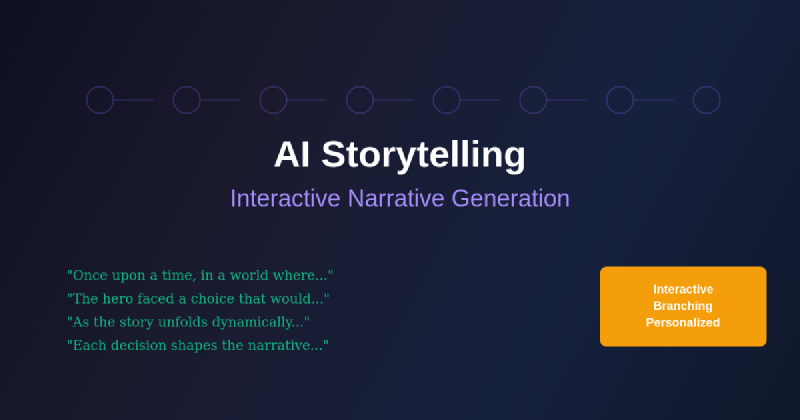The art of storytelling has undergone a revolutionary transformation with the advent of artificial intelligence, creating unprecedented possibilities for interactive narrative generation that responds dynamically to reader preferences, emotions, and choices. This technological evolution represents far more than simple automation of content creation; it embodies the emergence of collaborative storytelling where human creativity merges with machine intelligence to produce narratives that adapt, evolve, and personalize themselves in real-time based on audience engagement and feedback.
Explore the latest AI content creation trends to understand how artificial intelligence is reshaping creative industries and opening new frontiers for digital storytelling experiences. The intersection of AI and narrative creation has unlocked creative possibilities that were previously confined to the realm of science fiction, enabling stories that learn from their readers and evolve to create truly unique and personalized literary experiences.
The Evolution of Narrative Creation
Traditional storytelling has always been a fundamentally static medium where authors craft complete narratives that remain unchanged regardless of individual reader preferences or interpretations. The introduction of AI-powered narrative generation has fundamentally disrupted this paradigm by creating dynamic storytelling systems that can generate, modify, and adapt narratives in response to real-time user interactions and preferences. These systems represent a quantum leap beyond simple template-based story generation, incorporating sophisticated understanding of narrative structure, character development, and emotional resonance to create compelling and coherent stories that feel authentically human while maintaining the flexibility to adapt to countless different scenarios and reader preferences.
The transformation from static to dynamic narratives has opened entirely new possibilities for educational content, entertainment media, therapeutic applications, and interactive gaming experiences. Writers and content creators now have access to AI collaborators that can suggest plot developments, generate character dialogue, create detailed world-building elements, and even assist with maintaining narrative consistency across complex, branching storylines that would be virtually impossible to manage manually.
Understanding Interactive Narrative Architecture
Interactive narrative generation relies on sophisticated AI architectures that combine natural language processing, machine learning, and narrative theory to create coherent and engaging stories that respond intelligently to user input and preferences. These systems must maintain narrative consistency while allowing for meaningful branching paths, character development, and plot evolution that feels organic rather than mechanically generated. The technical complexity involved in creating truly interactive narratives requires advanced understanding of story structure, character psychology, and the delicate balance between user agency and narrative coherence.
Modern AI storytelling systems employ multiple layers of processing to understand context, maintain character consistency, track plot development, and generate appropriate responses to user choices. These systems must simultaneously consider immediate narrative requirements, long-term story arc development, character relationship dynamics, and thematic consistency while ensuring that generated content maintains the emotional resonance and engagement that defines compelling storytelling.
Experience advanced AI capabilities with Claude for sophisticated narrative generation that understands context, character development, and complex plot structures. The integration of advanced language models with narrative generation creates storytelling systems that can produce content rivaling human authors while offering unprecedented levels of interactivity and personalization.
Dynamic Character Development and Personality Systems
One of the most remarkable achievements in AI storytelling lies in the creation of dynamic character systems that can develop distinct personalities, maintain consistent behavioral patterns, and evolve throughout the narrative based on both predetermined character arcs and user interactions. These AI-driven characters possess sophisticated personality models that influence their dialogue, decision-making processes, and relationships with other characters, creating the illusion of genuine autonomous agents within the narrative framework.
The development of believable AI characters requires deep understanding of human psychology, personality theory, and the subtle ways in which individuals respond to different situations and stimuli. Modern AI storytelling systems can generate characters with complex motivations, internal conflicts, and growth trajectories that feel authentic and emotionally resonant to readers. These characters can adapt their communication styles, emotional responses, and decision-making patterns based on their interactions with both the protagonist and other narrative elements, creating rich and dynamic interpersonal relationships that enhance the overall storytelling experience.
Adaptive Plot Generation and Branching Narratives
The creation of truly adaptive plots represents one of the most challenging aspects of AI storytelling, requiring systems that can generate coherent narrative arcs while maintaining the flexibility to accommodate user choices and unexpected story developments. These systems must understand the fundamental principles of dramatic structure, pacing, conflict resolution, and thematic development while creating multiple potential pathways that all lead to satisfying narrative conclusions.
Advanced AI storytelling platforms can generate complex branching narratives where user decisions have meaningful consequences that ripple throughout the entire story experience. These systems track the cumulative impact of user choices, character relationships, and plot developments to ensure that each individual’s journey through the narrative feels unique and personally meaningful while maintaining the structural integrity that defines compelling storytelling.

The sophisticated architecture underlying modern AI storytelling systems demonstrates the complex interplay between user input processing, narrative generation engines, character management systems, and content delivery mechanisms that work together to create seamless interactive story experiences.
Emotional Intelligence and Reader Engagement
Successful AI storytelling requires sophisticated emotional intelligence that can recognize, interpret, and respond appropriately to user emotional states and preferences throughout the narrative experience. These systems must understand the subtle emotional nuances that drive reader engagement, creating content that resonates on both intellectual and emotional levels while adapting to individual reader preferences and emotional responses.
Modern AI storytelling platforms employ sentiment analysis, emotional modeling, and behavioral prediction algorithms to gauge reader engagement and adjust narrative elements accordingly. These systems can detect when readers are becoming disengaged, confused, or emotionally overwhelmed, automatically adjusting pacing, complexity, or emotional intensity to maintain optimal engagement levels throughout the story experience.
Personalization and User Preference Learning
The power of AI storytelling lies significantly in its ability to learn from individual user preferences, reading patterns, and engagement behaviors to create increasingly personalized narrative experiences. These systems continuously analyze user choices, reading speed, interaction patterns, and feedback to build comprehensive user profiles that inform future story generation and customization decisions.
Personalization in AI storytelling extends beyond simple genre preferences to include deeper understanding of individual communication styles, preferred narrative structures, character archetypes, thematic interests, and even optimal reading session lengths. This level of personalization enables the creation of story experiences that feel specifically crafted for individual readers while maintaining the universal appeal and emotional resonance that defines great storytelling.
Discover research capabilities with Perplexity to enhance your understanding of narrative theory, character development techniques, and storytelling methodologies that inform AI narrative generation systems. The combination of theoretical knowledge and practical AI implementation creates storytelling systems that respect literary traditions while pushing the boundaries of what’s possible in interactive narrative experiences.
World-Building and Environmental Storytelling
AI-powered storytelling systems excel at creating rich, detailed fictional worlds that serve as compelling backdrops for interactive narratives. These systems can generate consistent geographical features, cultural systems, historical backgrounds, and social structures that provide depth and authenticity to story experiences. The ability to maintain consistency across complex fictional worlds while allowing for exploration and discovery creates immersive narrative environments that rival those found in traditional literature and gaming.
Environmental storytelling through AI involves the generation of interconnected details that reinforce narrative themes and character development through setting descriptions, cultural artifacts, and world-building elements that readers can discover and explore. These systems understand how environmental details contribute to mood, atmosphere, and thematic development, creating worlds that actively participate in the storytelling process rather than serving merely as static backdrops for character actions.
Multi-Modal Storytelling Integration
The future of AI storytelling extends beyond text-based narratives to encompass multi-modal experiences that integrate visual, auditory, and interactive elements to create comprehensive story experiences. These systems can coordinate the generation of accompanying images, soundscapes, music, and interactive elements that enhance and complement the textual narrative, creating rich media experiences that engage multiple senses and learning modalities.
Multi-modal AI storytelling represents the convergence of various creative AI technologies, including image generation, music composition, voice synthesis, and interactive design. These integrated systems can create complete story experiences where every element works together to support narrative goals and enhance reader engagement through carefully coordinated sensory experiences that reinforce thematic elements and emotional content.
Collaborative Storytelling and Human-AI Partnership
Rather than replacing human creativity, AI storytelling systems increasingly serve as collaborative partners that enhance and amplify human creative capabilities. These systems excel at handling routine narrative tasks, maintaining consistency across complex storylines, and generating multiple creative options that human authors can select, modify, and integrate into their broader creative vision. This collaborative approach combines the systematic capabilities of AI with the intuitive creativity and emotional intelligence of human authors.
The partnership between human creativity and AI capability creates storytelling possibilities that neither could achieve independently. Human authors provide creative vision, emotional depth, and thematic coherence while AI systems contribute systematic consistency, rapid content generation, and the ability to explore vast creative possibilities that would be impractical to investigate manually.

The complex decision trees and narrative pathways that define interactive storytelling demonstrate the sophisticated planning and management systems required to create coherent multi-path narratives that maintain quality and engagement across all possible user journey combinations.
Educational Applications and Learning Enhancement
AI storytelling has found particularly compelling applications in educational contexts where interactive narratives can be tailored to individual learning objectives, preferences, and comprehension levels. These systems can create educational content that engages students through personalized story experiences while delivering specific learning outcomes through carefully integrated educational elements that feel natural and engaging rather than didactic or forced.
Educational AI storytelling can adapt to different learning styles, cultural backgrounds, and age-appropriate content requirements while maintaining engagement and educational effectiveness. These systems can generate scenarios that reinforce specific learning objectives, create characters that model appropriate behaviors and decision-making processes, and provide interactive experiences that allow students to practice skills and knowledge in safe, engaging fictional contexts.
Therapeutic and Wellness Applications
The therapeutic potential of AI storytelling extends into mental health and wellness applications where personalized narratives can be crafted to address specific emotional needs, therapeutic goals, and personal development objectives. These systems can create supportive story experiences that help individuals process difficult emotions, practice social skills, or explore personal growth opportunities through safe fictional scenarios that provide valuable insights and coping strategies.
Therapeutic AI storytelling requires sensitivity to individual emotional states, cultural considerations, and specific therapeutic objectives while maintaining the engaging qualities that make stories effective vehicles for personal growth and emotional processing. These applications demonstrate the profound potential for AI storytelling to contribute positively to human well-being and personal development beyond entertainment purposes.
Technical Challenges and Ethical Considerations
The development of sophisticated AI storytelling systems presents significant technical challenges related to maintaining narrative coherence across complex branching scenarios, ensuring appropriate content generation that respects cultural sensitivities and ethical boundaries, and creating systems that enhance rather than diminish human creativity and literary appreciation. These challenges require ongoing research into natural language generation, ethical AI development, and the psychological impacts of AI-generated content on readers and creators.
Ethical considerations in AI storytelling include questions about authorship attribution, the potential for AI systems to perpetuate biases present in training data, the impact on traditional publishing and creative industries, and the responsibility of creators to ensure that AI-generated content meets appropriate standards for accuracy, sensitivity, and social responsibility. These considerations require ongoing dialogue between technologists, authors, ethicists, and the broader creative community.
Future Directions and Emerging Possibilities
The future of AI storytelling promises even more sophisticated capabilities including real-time adaptation to biometric feedback, integration with virtual and augmented reality environments, and the development of AI systems that can collaborate with human authors in real-time to create hybrid creative works that leverage the strengths of both human and artificial intelligence. These emerging possibilities suggest a future where storytelling becomes increasingly interactive, personalized, and immersive.
Emerging technologies such as brain-computer interfaces, advanced emotion recognition systems, and quantum computing may further expand the possibilities for AI storytelling by enabling more sophisticated understanding of reader states, preferences, and responses. These technological advances could lead to storytelling experiences that adapt not just to conscious choices and preferences but to subconscious emotional and physiological responses, creating unprecedented levels of personalization and engagement.

The measurable impacts of AI storytelling across various applications demonstrate significant improvements in engagement, learning outcomes, therapeutic effectiveness, and creative productivity compared to traditional static narrative approaches.
The continued evolution of AI storytelling technology represents a fundamental shift in how we conceive, create, and experience narrative content. As these systems become more sophisticated and accessible, they promise to democratize creative expression, enhance educational effectiveness, and create new forms of interactive entertainment that blur the boundaries between reader and author, consumer and creator, in ways that enrich and expand human creative expression rather than replacing it.
Disclaimer
This article is for informational purposes only and does not constitute professional advice regarding AI implementation, creative writing, or educational methodology. The views expressed are based on current understanding of AI storytelling technologies and their applications. Readers should conduct their own research and consider their specific requirements when implementing AI storytelling solutions. The effectiveness and appropriateness of AI-generated content may vary depending on specific use cases, audience requirements, and implementation contexts.
